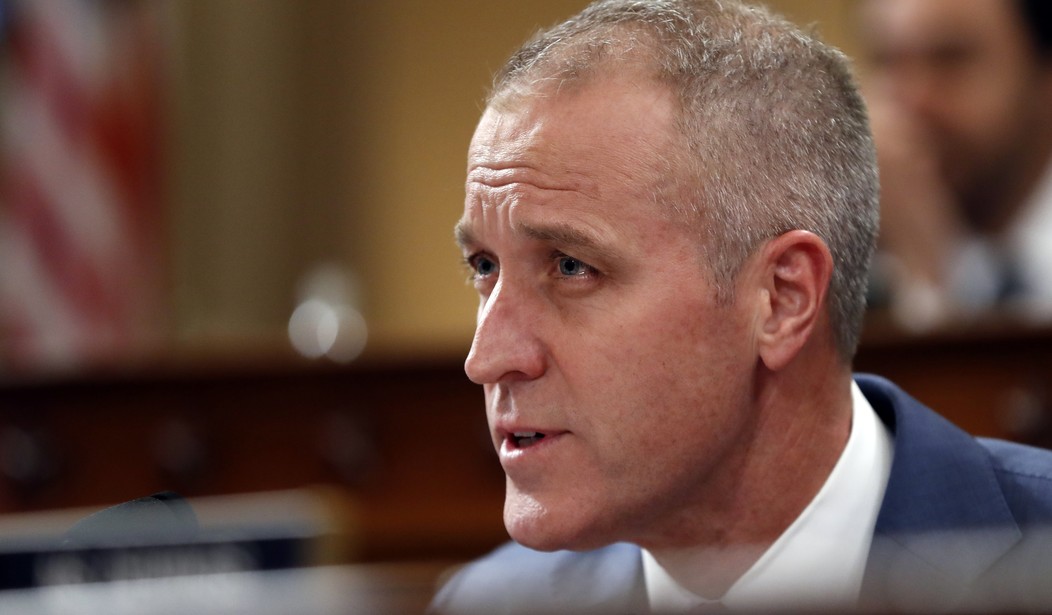With now just a little over two weeks away from the November midterm elections, it appears that the mainstream media outlets and forecasters who had been doubting a red wave not too long ago are finally back on board. Monday's rating change from Cook Political Report brought a devastating blow to Rep. Sean Patrick Maloney (D-NY) in particular, though, as he's currently chairing the Democratic Congressional Campaign Committee's (DCCC).
The rating, once "Lean Democratic," is now at "Toss Up" in Rep. Maloney's race against his Republican opponent, Assemblyman Michael Lawler.
House rating change: Rep. Sean Patrick Maloney (D) moves from Lean D to Toss Up at @CookPolitical as Dems admit the DCCC chair is now in serious danger in #NY17. Full analysis: https://t.co/89bvezbNuw pic.twitter.com/ncljBkSfZw
— Dave Wasserman (@Redistrict) October 24, 2022
The analysis by Wasserman is pretty damning, as he notes that "two weeks out from Election Day, Maloney finds himself in deep danger, simultaneously fighting for his political life in his Hudson Valley seat and desperately trying to prevent Democrats from being swept out of the House majority." On that latter point, Cook Political Report's Jessica Taylor also wrote last Friday how "Shifting Winds Keep Republicans in the Hunt."
There's also issues with polling and fundraising, though it's worth pointing out that House Majority PAC has been in the news for abandoning Democrats:
Both parties' internal polls show Maloney locked in a tight race against GOP Assemblyman Mike Lawler in the 17th CD, which is roughly three-quarters new to Maloney following redistricting. The CLF and NRCC have outspent Democratic groups $3.5 million to $384,000 so far, and the climate for Democrats in the state has deteriorated in the last few weeks as GOP Rep. Lee Zeldin has surged in the governor's race.
...
Nonetheless, Maloney urgently needs a boost — and his predicament is all the more awkward because it would be a national public relations disaster for the DCCC chair to divert scarce resources from other vulnerable Democrats and open seats to save himself. Instead, look for Democrats' top Super PAC, House Majority PAC, to launch a late rescue effort sometime later this week to counter CLF's spending.
Recommended
The Congressional Leadership Fund (CLF), which is mentioned in Wasserman's analysis, also sent out an email on Monday to address the spending in Maloney's race. This included highlighting remarks Maloney made during the most recent ABC News' "This Week," during which Maloney told host Jonathan Karl that for CFL to spend money in that race was "lighting money on fire."
"Frontline Democrats getting cut off can thank Sean Patrick Maloney and his vain attempt to save himself," said CLF Communications Director Calvin Moore. "Sean Patrick Maloney’s hubris is the reason why he’s in a tough race to begin with and now it’s the reason Democrats will lose additional seats in November."
It was also announced on Monday that the DCCC is spending $600,000 for a new ad attacking Lawler.
NEW - The DCCC is going to spend $600K on a new ad hitting @RepSeanMaloney’s GOP opponent. Ad will go up tomorrow
— John Bresnahan (@bresreports) October 24, 2022
Midterm elections historically tend to result in losses for the president's party in power, as nearly every time that party has lost seats in Congress. The one recent exemption was during the 2002 midterm elections when President George W. Bush was in office and Republicans actually gained seats due to the rally around the flag effect after the September 11, 2011 terrorist attacks.
But, as Cook Political Report's Dave Wasserman tweeted in his thread about the rating change, for Rep. Maloney to lose his seat would also be historic.
A Maloney defeat would be historic: a sitting DCCC/NRCC chair hasn't lost reelection since 1992 (when NRCC Chair Guy Vander Jagt lost his primary in Michigan), and hasn't lost a general election since 1980, when DCCC Chair Jim Corman lost in California.
— Dave Wasserman (@Redistrict) October 24, 2022
Wasserman makes notes of primary election in his tweet, which is also relevant when it comes to the great lengths that Rep. Maloney went through to win his primary. After state Democrats sought to go with particularly egregious gerrymandered maps, courts weighed in after lawsuits were filed to rule them unconstitutional and new maps were drawn. The move led to chaos pitting many Democratic incumbents against each other, in New York's 12th Congressional District, where Rep. Jerry Nadler (D-NY) defeated Rep. Carolyn Maloney (D-NY).
As those maps were being announced, Rep. Maloney jumped at the chance to run in the state's new 17th Congressional District, forcing Rep. Mondaire Jones (D-NY) to run elsewhere, which led to cries of racism and outrage from fellow New York Democrats. Jones is black. When running in the state's new 10th Congressional District, Jones lost, ultimately coming in third.
Further, as Wasserman mentions in his analysis, the redistricted seat no longer provides so much of an incumbency advantage for Rep. Maloney.
The DCCC has come under fire in other ways, especially when it comes to promoting Republican candidates in the primary season because they're considered easier to beat. The DCCC promoted John Gibbs in his August primary against Rep. Peter Meijer for Michigan's 3rd Congressional District, with Gibbs pulling off a win in the early hours of the next morning against the pro-impeachment Republican.
Maloney has defended the move at length, since Gibbs is considered easier for Democratic nominee Hillary Scholten to beat. That being said, the race is at best considered "Lean Democratic," and Decision Desk HQ still has it as a "Toss-Up," actually giving Gibbs a higher percentage of winning.
Other forecasters still consider the Maloney-Lawler race to be "Lean Democratic," at least for the time being.



















Join the conversation as a VIP Member